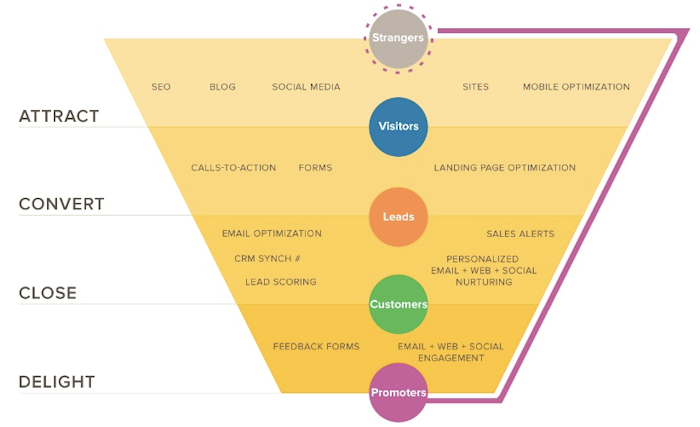
Each stage of a marketing plan has many levels of complexity. As with any endeavor, the plan is often the simplest description of intent. Even when areas of complexity are highlighted, actually putting the plan into action is even more complex.
For all the complexity that a marketing campaign can entail, there are certain characteristics that comprise any successful one. The most important element is often a matter for debate, but these elements are always important. Each element is related and can be subdivided, but the success of a marketing plan often hinges on how many of the elements are present or absent.
Have A Goal
Success is impossible if you don’t have a clear definition of what success entails. Before anything else is defined, you need to have a goal that defines success.
That goal can be anything as simple as, “We intend to increase revenues by 10%” or as complex as, “We intend to sell at least 1,000 units of Widget A, 500 units of Widget B, 600 of Widget C, and no more than 1,500 units of Widget Q with fewer than 10 complaints for each hundred purchases per category.” In both statements, success is easily defined. If the first company increases revenues by 10%, it has succeeded. If the second meets goals in all categories, it has completely succeeded. If the company met only some of its goals, it has only partially succeeded. If no goals are met, the company has failed.
Any project likely has more than one goal. Each part of the process likely has its own goals that define their individual success or failure. These sub-goals will combine to make reaching the primary goal possible and should not be discounted.
Without a goal, there is no way to determine whether your marketing strategy has succeeded. You need to define your terms and set up your campaigns for success. You’ll be glad you took the time afterward.
Define Your Market
Part of your goal may take its shape from your market. The larger market you have, the more return you can expect to get from a marketing campaign. Whether you have a mass marketing plan or are aiming for a niche market, you need to define your market’s characteristics.
After you have selected the defining features of your target market, you need to come up with a list of common characteristics this population has. These characteristics won’t be as universal as your primary feature, but a part of this stage will be determining the frequency of these other characteristics.
This may seem like a lot of work, and it is. Going into a marketing campaign without an idea of your target population’s key characteristics will only get you into trouble. The best-case scenario is that you end up targeting a different population than you intended. The worst case is that you alienate the population you wanted to attract.
Selling The Prospective Buyer
After you have defined your goal and audience, you need to figure out how to sell your product to this market. For that you need to know what this audience needs and considers valuable. Once you have determined that, you will be able to tell your audience how your product can fill those needs.
Your message should be clear, without being blunt. Although bluntness is a useful tool in some circumstances, when you are introducing a product, the process should be gentle. You don’t want your customers to feel pressured into buying your service; you want them to buy it because they recognize its value.
Although not every customer will buy immediately, make certain you give more information to those who want it. Interest in having more information indicates that the person is giving serious thought to buying. Nurture that thought and you can often turn a “maybe” into a definite “yes.” Even if the customer doesn’t buy the advertised product, they may buy some other product or service that you offer.
With that in mind, every advertisement should give some form of contact information. Whether that’s a website address, an e-mail address, or a telephone number, ensure those who want more information know where they can get it.
Use Multiple Advertising Platforms
Never limit yourself to one advertising platform, however widely used. No matter how prevalent television, Facebook, or Twitter use is in your target demographic, you may miss some of the population. Getting the message across platforms maximizes the number of avenues for prospective customers to find your message.
Be careful to prioritize your platforms. If your audience mostly limits itself to Facebook, Twitter, and YouTube, then put the most effort on creating appropriate content for those sites. Limiting the number of platforms you are on means that it is easier to maintain message consistency, and means that you can focus your efforts on the platforms that will give the best returns.
Also take the time to consider how to present your message on each site you advertise on. The different social media sites all have different submission styles and guidelines. Take that into account when you choose which platforms to focus on.
Different businesses may also have better reception on different social media platforms. If you can’t decide, try a variety of sites and then choose the ones that get you the most positive interest from your focus group. Focus on those sites and leave the rest alone.
Conduct Follow-Ups
Once your marketing campaign has launched, track the results of the different components and the overall success of the campaign. Once you’ve collected the data, apply it to your next campaign. No marketing campaign has reached perfection. Even successful campaigns could have used a few improvements. Try and figure out where your plan went wrong and where it was right.
Don’t just collect numbers and general results. Pay attention to user comments and suggestions. While not every user’s suggestions can be addressed, listen to them. This can give you valuable insight as to the overall success of both your campaign and your product as a whole. If elements of your strategy aren’t working as well as you had hoped, change the course of the plan. Successful parts of your strategy could likely use a few more resources, so channel some resources to those elements and bring the failed elements to a graceful close.
Collect comments and respond to your customer’s comments and complaints. Responsiveness can be one of the most successful marketing tools. Even if you have to give a negative answer, politeness and responsiveness can get a customer to return. Customers enjoy a personal response, so give them what they want.
Once you have a successful marketing strategy, keep using it. Although the strategy may require fine tuning every now and then, you base formula still works. Learn from those strategies that didn’t work. Nothing that can make your next marketing strategy better is without value. The only irrevocable failure is a failure to learn
* Lead image adapted from QIAGEN_PR
Now Read:
- Jaw-dropping Digital Marketing Stats And What They Mean For You
- How to Create an Effective Media Plan Using Digital Marketing
- 5 Common Digital Marketing Mistakes That Cost You Money
Next Steps:
- Jaw-dropping Digital Marketing Stats And What They Mean For You
- How to Create an Effective Media Plan Using Digital Marketing
- 5 Common Digital Marketing Mistakes That Cost You Money
Hand-Picked Related Articles:
- Jaw-dropping Digital Marketing Stats And What They Mean For You
- How to Create an Effective Media Plan Using Digital Marketing
- 5 Common Digital Marketing Mistakes That Cost You Money
Don’t Overlook These Elements For A Successful Marketing Campaign
The post Don’t Overlook These Elements For A Successful Marketing Campaign appeared first on Search Engine People Blog.
(92)







